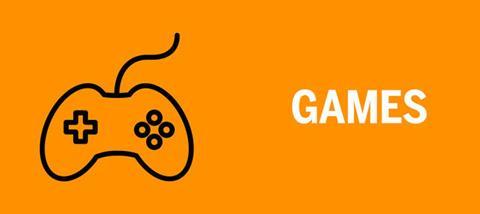
To download as a PDF, click here.
WATER BALLOON VOLLEYBALL
You will need: two bedsheets; filled water balloons (you can decide how many depending on how many rounds you choose to do); a net
This game works very similarly to regular volleyball. Set the net up across the middle of your space. Split into two teams, give each a sheet and send them either side of the net. One team starts with a water balloon on their sheet. They should try to flip this over the net by shaking the sheet up and down. The opposite team has to catch the balloon on their sheet, then flip it back. If a team misses the water balloon or if the balloon doesn’t make it over the net, the other team gets a point. When the water balloons run out the team with the most points wins the game!
QUICK SPLASH
You will need: a water gun
Stand all the players in a circle apart from one volunteer who stands in the middle. The volunteer must think of a category that links in some way to the World Cup, eg countries that have qualified. The leader hosting the game can help to think of ideas for categories. You may want to have already thought through a list of potentials (this game can also be played with any theme; it doesn’t have to be the World Cup). The volunteer then chooses their own answer that fits the category, for example in this case they may choose Spain as their country that qualified for the World Cup. They would then tell the leader their answer. The rest of the circle is told the category but not the answer.
The players must go around the circle saying something that fits the category. If someone mentions the answer that the volunteer has chosen, the volunteer can spray that person with the water gun. If one of the players hesitates for too long, repeats something another player has said or says something that doesn’t fit the category they will also be sprayed with water. The round is over once someone has been sprayed with water. That person then swaps places with the player in the middle of the circle and a new category is chosen.
NUTMEG!
You will need: enough balls for half the number of people in the group
The players must find a partner. Give each pair a ball. The pair must stand opposite each other with their feet spread apart and the ball an equal distance between them. They must maintain eye contact throughout the game. The leader hosting the game will shout out random body parts, eg heads or shoulders. The players must follow the instructions by touching their own head, shoulder etc.
When the leader shouts: “Nutmeg!” the players must try to kick the ball through the legs of their opponent. Whichever player is quickest wins the round, and their partner is out. The game continues until there is only one pair left, and the winner of that round is crowned the overall winner. This game is all about speed, fun and a little bit of competitiveness!
PB AND J RELAY
You will need: slices of bread; jam; lots of ping-pong balls, a low table / something to balance the bread on; masking tape
Place four slices of bread spread with jam on the low table and place a line of tape on the floor two metres in front of the table. Split the group into four teams. Each team lines up in single file behind the tape but in line with a slice of bread. Each team takes it in turns to bounce a ping-pong ball onto the slice of bread (the ball must bounce at least once on the floor first in order for it to count.) Each player has three tries. The team that has the most ping-pong balls on their slice of bread at the end wins!
BALL PIT CHAOS
You will need: empty paddling pool or ball pit filled with plastic balls
Split the group into two teams. One team stands in the paddling pool and the other surrounds it. The aim of the game is for the team inside the paddling pool to throw all the balls out and for the surrounding team to throw the balls back in.
The leader sets a timer for one minute. At the end everyone must freeze and the team in the paddling pool must get out. A bird’s-eye view photo is then taken of the paddling pool to show how many balls are left in. The teams then swap over and the same happens. At the end the two photos are compared to see which team has the fewest balls left in the paddling pool. Whichever team has the fewest wins the game!
Supporting documents
Click link to download and view these files930411.pdf
PDF, Size 77.17 kb






































